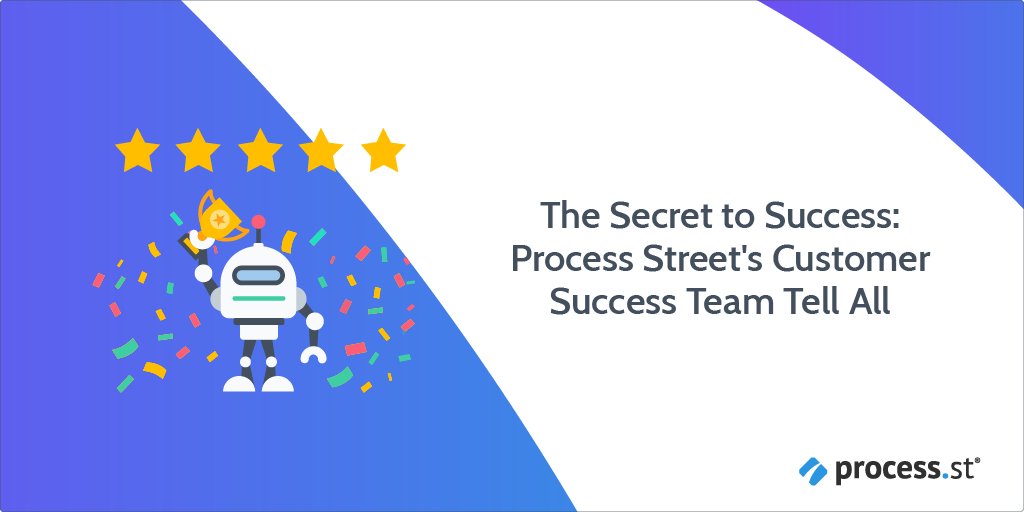
I was once abandoned when I was six years old.
We were shopping in a busy department store when I decided to ride the escalator one more time, while my parents kept on walking.
Although I now know that my parents were completely oblivious to my own decision to take a solo trip down the escalator, I’ve never forgotten the fear, anxiety, shock, and anger I felt when I reached the bottom of the next floor down.
I didn’t know where to go, what to do, or how to find them again. I felt lost, uncared for, and cruelly abandoned.
Ok, so I wasn’t really abandoned and I was, in fact, entirely to blame for this incident – but I’ve never felt the same about escalators or busy department stores since. I still avoid both.
I’m sure we’ve all had similar “abandonment” experiences when we were kids, but maybe we’ve had some more recently too…
Feeling lost, abandoned, and unappreciated is the #1 reason customers move away from products and services and is why 52% of customers will never touch a brand again.
“Humans are driven by feelings. So if you want the consumer to remember your product or brand, they must be engaged and impassioned by the interaction with your company.” – Inc, Harvard Professor Says 95% of Purchasing Decisions Are Subconscious
Not with Process Street though. Thanks to our customer success team, no customer of ours ever feels lost, uncared for, or abandoned.
How? Let’s find out together as we go through:
- The 4 best practices our customer success team follow
- How our customer success team succeeds at customer success
The 4 best practices our customer success team follow
The Process Street customer success team live and die by the following four best practices to a) ensure their customers know how to get the maximum value out of the product, b) solve issues before they become problems, c) find opportunities to improve, and d) make our customers feel cared for:
Customer success best practice #1: Onboard customers quickly, but to a high standard
If they can’t use it, they won’t use it.
This mantra has percolated our onboarding processes. Onboarding new customers in a way that not only helps them understand every aspect of our product but also makes sure that Process Street becomes part of their everyday lives is paramount to the success of the customer success team. Onboarding can be a lengthy process if it’s done properly, so we’ve found multiple ways to streamline the process. Find out how later!
Customer success best practice #2: Build deep relationships with each and every customer
Strong relationships are built on trust. Trust breeds loyalty. And, because loyal customers spend 67% more than new ones, one of the biggest focuses for us, as a customer success team, is on building deep relationships with each and every customer.
Like Amazon do.

They listen to their customers and continuously push the boundaries to provide them with what they need. They see their customers “as invited guests to a party” that they’re the host of. And, they treat every interaction they have with their customers as an opportunity to improve their relationship with them. It’s all about helping their customers succeed.
Customer success best practice #3: Add value by spotting upsell opportunities
“Each time a customer sees the monthly or quarterly or annual subscription payment, they wonder, should I be paying for this?” – Tomasz Tungz, Why Customer Success? Why Now?
To avoid this, we are constantly looking for opportunities to add value to our customer’s experience.
Again, like Amazon.
Amazon Prime was initially created because Amazon discovered that customers wanted quality products for less money, quicker. It was a solution that was designed to meet all of those customer needs and as a result, is upsold to us at every opportunity.
What better way to help your customers succeed than building something that directly solves their problem or meets their needs?
Customer success best practice #4: Identify and deal with problems proactively
We know that for every customer that complains, there are 26 who don’t say anything – they simply cancel their subscription and leave. So, we make sure we’re ahead of the game when it comes to spotting problems and handling them quickly and efficiently.
These four best practices help our customer success team reach the following customer success objectives:
- Turn customers into advocates
- Increase customer retention
- Optimize the customer lifecycle
- Manage customer support
- Up-sell and cross-sell
- Generate referrals
- Increase customer lifetime value
- Monitor product usage
- Track success metrics
(Learn more about these objectives by reading this e-book: “The Complete Guide to Customer Success for SaaS Companies“)
Now you know what we’re working towards it’s time to find out how we actually do it.
How our customer success team succeeds at customer success
“We’re able to achieve negative churn. Month to month the revenue from the customer base we have is growing. In theory, if we never signed a new customer again, we would still be able to grow our revenue. Negative churn is where you need to be.” – Jason MacMurray, Process Street’s VP of Customer Success
With a Net Promoter Score (NPS) of 49 (50 is considered excellent), a consistent customer satisfaction rating of 97.4%, and coming from a place of negative churn, it’s clear we know what we’re doing when it comes to customer success.
But how do we do it?
According to the customer success team, it comes down to one simple thing.
What’s the one thing you must do to succeed at customer success?
Invest in customer success software like Process Street.
According to research, 83% of organizations think customer success needs to ‘go digital’, but only 25% of customer success teams use software to succeed with their customers.
We’re not one of them!
What exactly is Process Street?!
For those who don’t know what Process Street is, this is for you.
Process Street is super-powered checklists. It’s the #1 business process management (BPM) software out there, as voted for by GetApp. Build templated processes for all your recurring tasks and run checklists from these templates each time you need to complete a process. With it’s no-code platform and humungous template library, you can get started right now.
Watch the below for a quick demo, or read this for a beginner’s guide to using Process Street.
Our customer success team uses Process Street with Salesforce to build relationships, spot opportunities, and solve problems.
I sat down with Blake Bailey, Process Street’s customer success team lead (who also features in 5 Mind-Blowing Things We Learned About Our SaaS Price Model), to learn how we use our own product to help us follow our customer success best practices, meet our objectives, and make sure our customers succeed with Process Street.
Blake, first up, why do we use Process Street for our customer success tasks?
“Ok, to put it simply, Process Street makes the process of onboarding customers quick, easy, and super simple for the whole team to follow. It gives the customer success team a clear and actionable process to follow which includes automated reminders to book meetings and stuff like that. It also allows us to integrate with Salesforce so we can quickly and easily pull in customer information as and when we need it, without any duplicated effort.“
So I guess the next question is how does the customer success team use Process Street for customer onboarding?
“For larger customers, we tend to have three to five onboarding meetings spaced out over about two months.
Here, I’ll focus on the first initial meeting.
So, as soon as the customer signs up to Process Street they get a series of messages via Intercom to make sure they book in a meeting with us.
Once they’ve done that, we jump into our Salesforce CRM, access their account page, and click on the custom ‘Onboarding’ checklist template run link”.
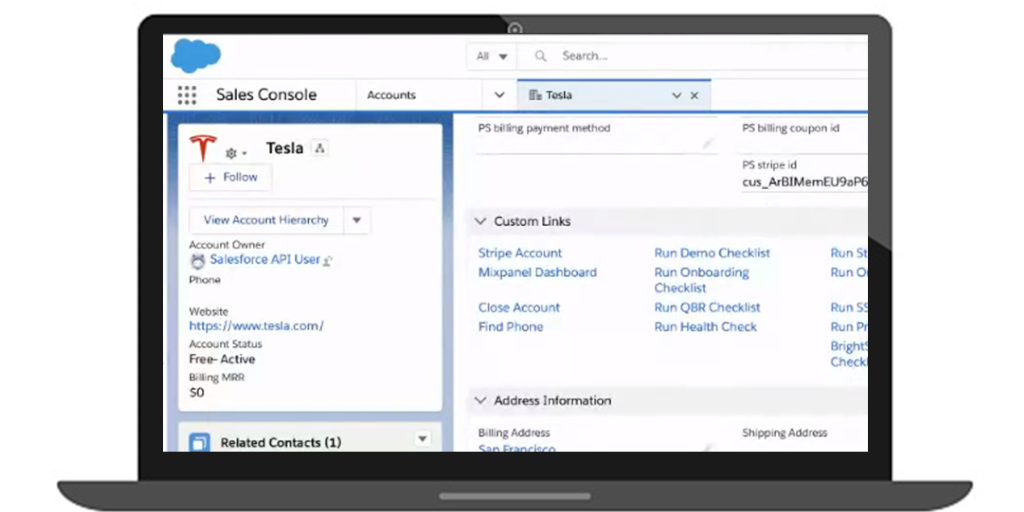
“This run link opens up a brand new checklist from the ‘Onboarding’ checklist template and, via integration with Zapier, auto-populates the checklist with the customer information from Salesforce.
The data that pulls in from Salesforce includes things like the pricing plan they’re on, the number of users they have, the company size, their sign-up date, and the sales account executive.
If a customer is running late for their first call, which can happen from time to time, we can select an option from the drop-down menu in the checklist which fires off an automatic email to them, to ask if they’re joining.
As we go through the call we can record key information such as what processes they need to build, when they need them set up by, the different roles within the team, what they need support with, and the metrics they’re interested in hitting.”
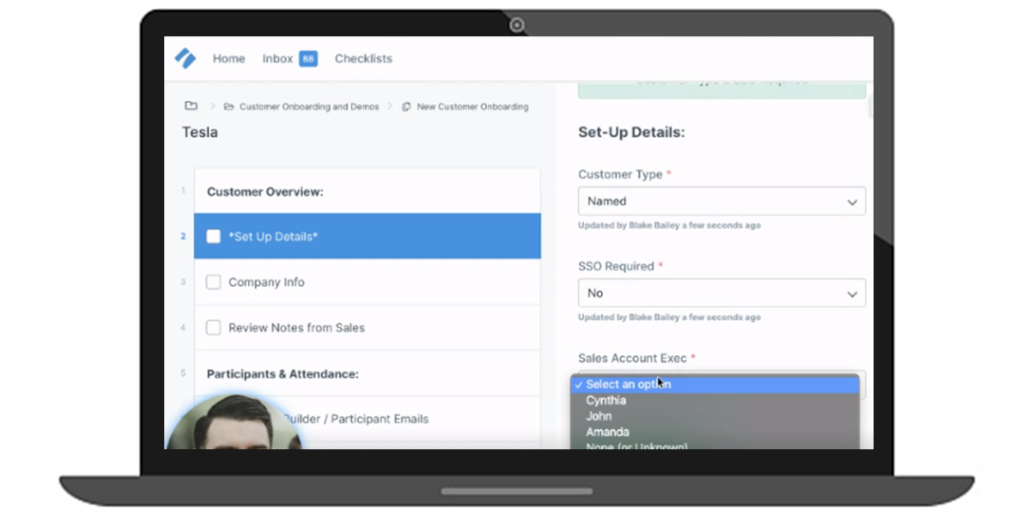
“As soon as we’ve finished the meeting and completed the checklist, all the information we’ve captured gets sent back into Salesforce and a link to the checklist is stored too, in case we need to refer back to the checklist or update anything during our other onboarding calls.”
Ok, so what’s the biggest benefit of using Process Street to onboard customers?
“Using Process Street and integrations through tools like Zapier, we’re able to ensure that all of our data passes from one place to another seamlessly and that our customers have a really pleasant onboarding experience with us, here in Process Street customer success.”
To see all this in action, Blake will walk you through the process himself in this video:
And, to use an onboarding checklist template, like the one Blake talks about, try this High Touch Client Onboarding for SaaS Companies Checklist Template.
Too many organizations take the wrong approach when onboarding high-touch customers and they pay the price of increased churn rates and low long-term retention. Use this template to get it right.
Click here to access the High Touch Client Onboarding for SaaS Companies Checklist Template!
If you don’t have an account with us, sign-up for a free trial.
How does the customer success team use Process Street to add value to the customer’s experience and spot upsell opportunities?
“To make sure we’re on top of what our customers need and also to check-in on how they’re doing, we run quarterly business reviews, or QBRs. This helps us spot any potential problems. Like for example, if they haven’t logged in for a while – we might want to address that. Or, if they’ve started creating loads of different templates for the same sort of tasks, we could suggest they use conditional logic to streamline their processes. Stuff like that.”
How do we do that then?
“In Salesforce, we’ve added a ‘QBR Checklist’ run link to each customer account, so when it’s time for their QBR, all we have to do is run the QBR Checklist. This opens up a brand new QBR checklist and automatically pulls in the customer’s data from Salesforce, via Zapier integration.”
Like when we onboard customers?
“Yeah, exactly. So, the goal of this process is to create a customized report deck for the client. In this deck, we want to include things like new features, account information, how active they are, and when they joined.
We also want to add in their logo – just so it looks super-personalized. A good trick to easily grab the client’s logo is to add a Google search link into the template. So for example, I usually Google for something like “transparent version of the customer’s logo”. I can then take the link to this search query and add it into the template so that each time I create this report, I can quickly find the logo I want. Then, once I’ve done that, all I need to do is upload it, so it becomes part of the checklist.”
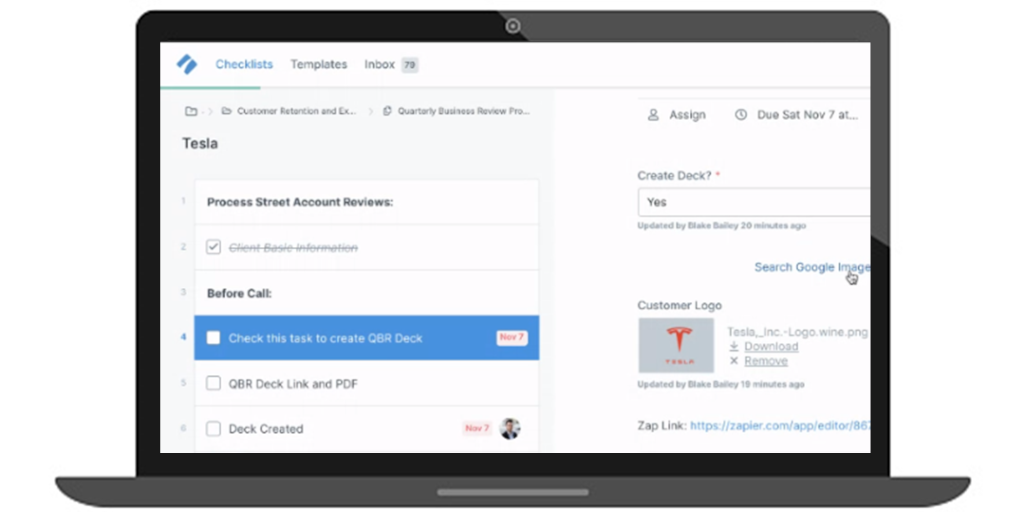
“Once we’ve done all that, we can check that task off and the QBR deck will be automatically generated.“
How does the QBR deck get generated?
“Via Zapier integration. We have a QBR template in Google slides with appropriate variables in it, like for example client name, client logo, client activity, last time they created a checklist, new features, etc.. and we’ve set up a Zap that allows Zapier to pull that information from Salesforce and the QBR checklist into the report deck.”
Ok, sounds super-efficient, but also complicated? Is it difficult to set up?
“Nope! It takes two seconds. I’ll run through it real quick.
If you’ve created Zaps before, you’ll know that you need a trigger to start the Zap, right?
So, the trigger to create this report deck is the task we checked off earlier, in the Process Street QBR checklist.
Then, we need to confirm what actions we want Zapier to take to populate this report.
So, in this case, we first need to confirm that we want Zapier to create this report deck. Then, we need Zapier to find the customer record in Salesforce, pull data from that record into the deck, pull data from the QBR checklist into the deck, and format the dates so it all looks pretty. Once the report deck has been auto-populated with this information, we’ll see things like the number of members, number of guests, web sessions, active templates, active checklists, sign-up date, number of checklists they’ve run, last time they ran a checklist, all that type of stuff.“
Now you have the QBR report ready, what happens next?
“We take the customer through it on a call. As we’re going through the deck, we’ll have the QBR checklist open in front of us, so we can add notes to show how they’re doing. We also make improvement recommendations and add action items that are automatically created as tasks in Salesforce.
If we think there’s potential to expand this account, we mark the task as “yes” and another task is created conditionally. Once we’ve filled out this conditional task, and after we’ve completed the checklist, a new opportunity gets created in Salesforce automatically.
Once we’ve done all that, we send the deck to the client using the email widget and complete the checklist. This then sends all the information we’ve collected in the checklist into Salesforce. New notes, new tasks, and new opportunities are then created – depending on what we’ve added to the checklist.“
Sounds simple enough, but if you need extra clarification, Blake’s recorded another video that might help:
If you want a QBR checklist, similar to the one we use, try this Sales Report Checklist Template.
Use the template as it is, or customize it using features such as stop tasks, dynamic due dates, conditional logic, and approvals.
Click here to access the Sales Report Checklist Template!
How does the customer success team use Process Street to build long-lasting customer relationships?
“Good relationships create loyal, happy customers – right? So, building really solid relationships with our customer base is huge for us. We want to show our customers that we care. We want to show them that they’re special, and that we know exactly what they need from us. The Process Street platform is paramount to helping us do this.
We know that around 9 out of 10 consumers value a business that knows their account history and knows what their current activity levels are. We also know that around 7 out of 10 consumers value having the same customer success representative each time they interact with us.
That’s why we’ve built a customer health-check into our weekly to-do list. It’s important for us to check in with our customers on a weekly basis so we can build really strong connections with them, spot and deal with any potential problems, and also offer them help, guidance, and support if they need it.”
How do we run these health-checks?
“I mean we could run health-checks manually. You know, we could check every single customer’s account, every single week to make sure they’re ok. But that would take too long, right? So, we’ve automated the whole process.
In Salesforce we’ve added a run link to the ‘Health Check Checklist’ and created a Zap which automatically runs this checklist every Wednesday at 9 am on every account.”
How does it do that?!
“We’ve used the Mail by Zapier utility and set it up so that every Wednesday at 9 am an email gets sent from every customer account in Salesforce to a Zapier email address. This email has the name of the customer record and the ID of their account in Salesforce. When Zapier receives this email, it triggers a Zap.”
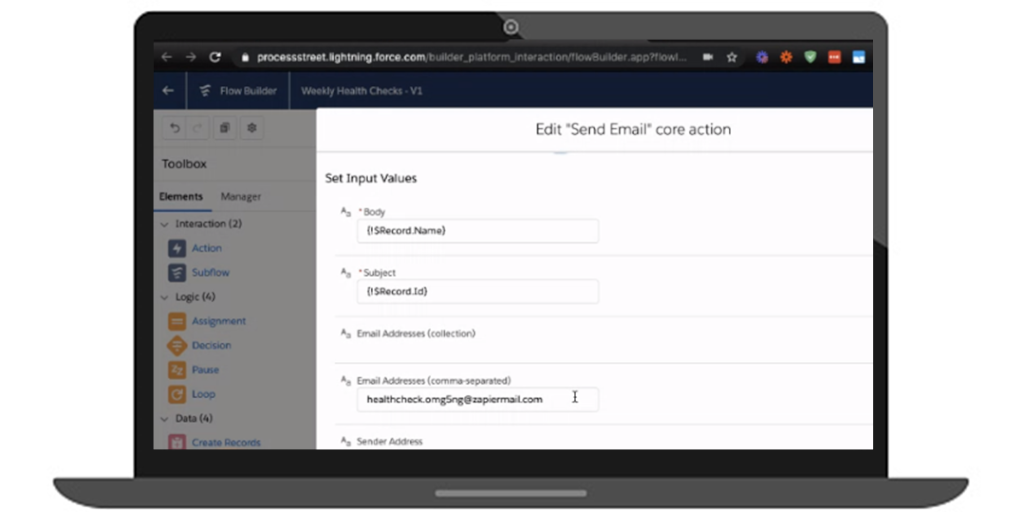
“The Zap uses the customer’s account ID to find the account in salesforce and from that account, it finds the owner ID, which is the name of the customer success manager, or CSM. It then runs a new Health Check Checklist in Process Street, auto-populates the date, time, and account information like the MRR or rebilling date, adds a due date, and assigns the checklist to the CSM.
This is important because if there are any changes to who owns which account, it will handle the changes automatically without us having to do anything. It pulls the information in, live, every week.
The checklist also loads some of the different customer success tools we use. For example, we use Mixpanel to monitor things like customer activity. So, the CSM can access this tool and use it to see what the customers’ usage patterns are and then add this information into the checklist.
They can answer pre-set questions like:
- Are template views increasing or decreasing?
- Are paid seats stable or unstable?
- Are checklist runs stable or unstable?
And then, they can give them a health score. They can select blue if they’re healthy, green if they’re expanding, yellow if they’re a low concern, red if they’re a high concern, and black if they’re absent.
Once they’ve added this information, the CSM can complete the checklist which will send everything from the checklist into the customer’s account within Salesforce. We’ve also set up a filter in Salesforce which allows us to run reports based on these health scores to give us a snapshot of who’s expanding and who’s at risk. That way, we always know exactly what’s happening with that customer at any given point.”
Again, Blake’s pulled a blinder and made this video to walk you through the process we follow:
And finally, how does the team use Process Street to identify issues and deal with problems proactively?
“This is probably one of the best things about Process Street and it’s what makes it the best BPM software out there.
We’ve integrated our customer success processes with Intercom, where our customer support team handles customer complaints, requests for new features, and general queries. Each time something comes into Intercom that needs input from the customer success team, we get notified instantly so we can jump in and take action immediately.”
Can you give us an example?
“Sure. Say a customer wanted to upgrade their plan. This initial request would come in through Intercom, where a customer service rep would pick it up. They would tag this as an ‘upgrade request’ which would automatically open up a new checklist, pull in the customer details from Intercom, send a notification to me in Slack and on email, and allow me to jump in and deal with it super-quickly. Once I’ve upgraded this customer and completed the checklist, the customer service team then receives a notification so they can update the customer. It works so well and helps us approach our customers in the right way as quickly as possible. We have this type of automated process set up for things like bug reports, new feature requests, queries, and stuff like that.”
Blake, any last pieces of advice, tips, or tricks for our readers?
“Be sure to check out our monthly webinars. We did one recently where Salesforce Datorama’s senior success consultant Alex Hauer, revealed his customer success team secrets.”
If you’re interested, check out the webinar Blake’s talking about:
(As an aside, we also wrote these learnings up into an interesting piece on how the Salesforce customer success team use Process Street. Read it here.)
And with that, what’s your favorite thing about Process Street?
“Without a doubt, my favorite thing about Process Street would have to be the ability to automate things. If you know anything about me, you know that I hate manual labor and automate nearly everything in my life. Process Street makes that easy.”
So, there we have it. A sneaky peek at some of the ways the Process Street customer success team uses Process Street to help their customers succeed with Process Street.
For those that have read some of my previous work (like “Find the Best Customer Success Software & Grow Lifetime Customers“, “Stop Profits Plummeting with a Quality Management Plan“, and “EQMS: The Best Way to Crush Competition, Push Productivity & Reduce Recall” for example), you’ll know I usually like to end on a powerful quote.
So, here’s one from poet, memoirist, and civil rights activist, Maya Angelou:
“People will forget what you said. They will forget what you did. But they will never forget how you made them feel.”
We’d love to hear how your customer success team succeeds with customers in the comments. Who knows? You may even get featured in an upcoming article!








Amanda Greenwood
Amanda is a content writer for Process Street. Her main mission in life is to write content that makes business processes fun, interesting, and easy to understand. Her background is in marketing and project management, so she has a wealth of experience to draw from, which adds a touch of reality and a whole heap of depth to the content she writes.